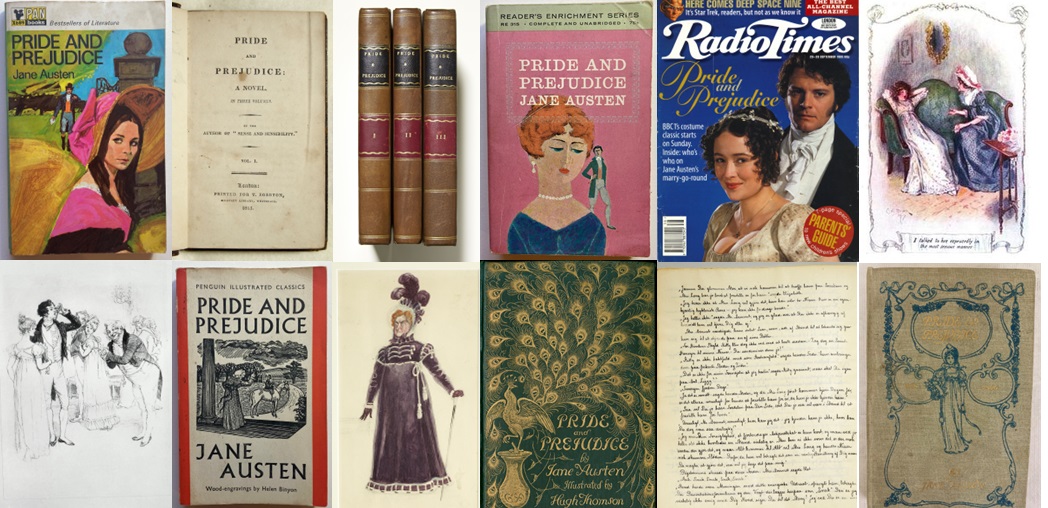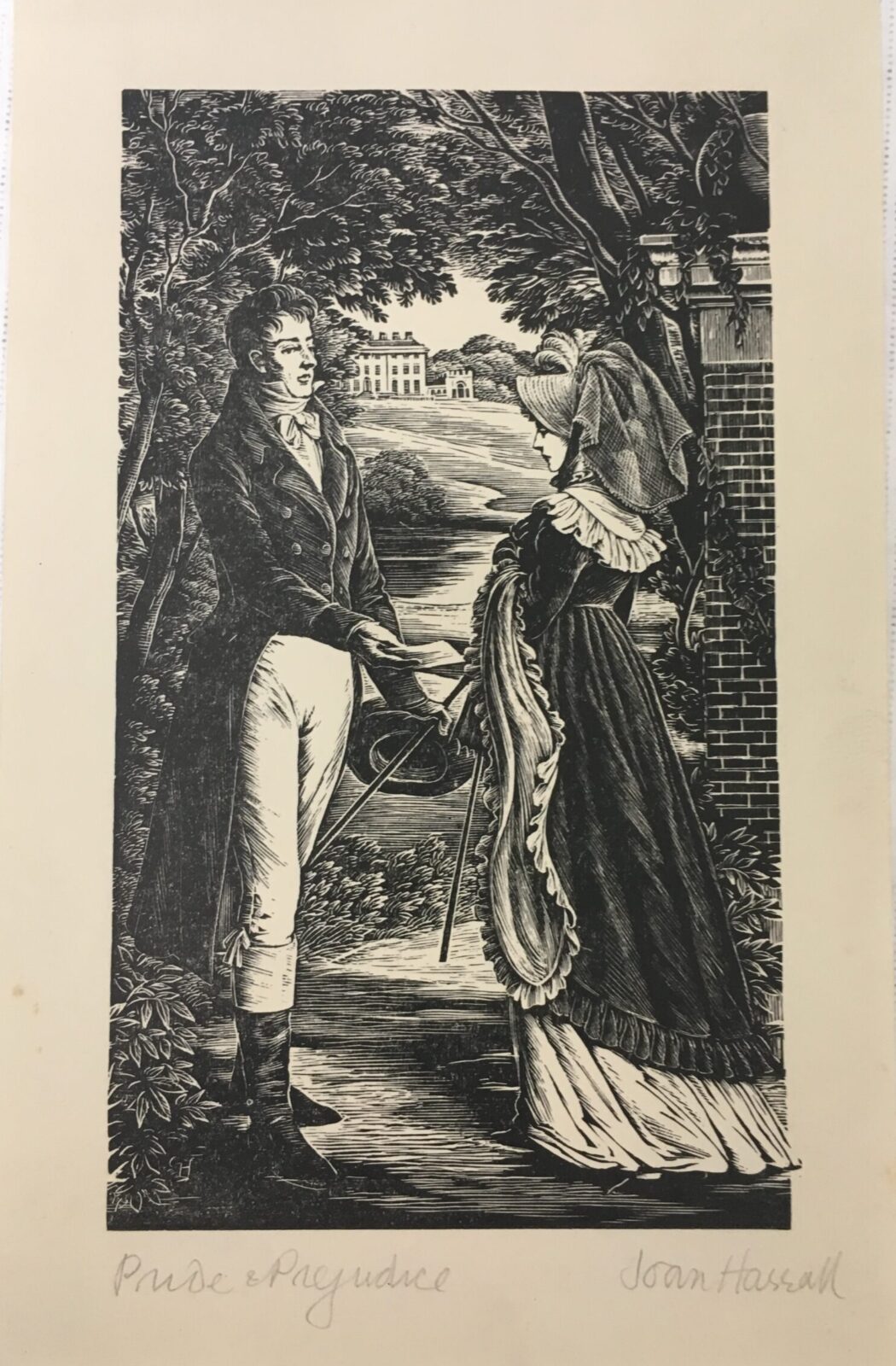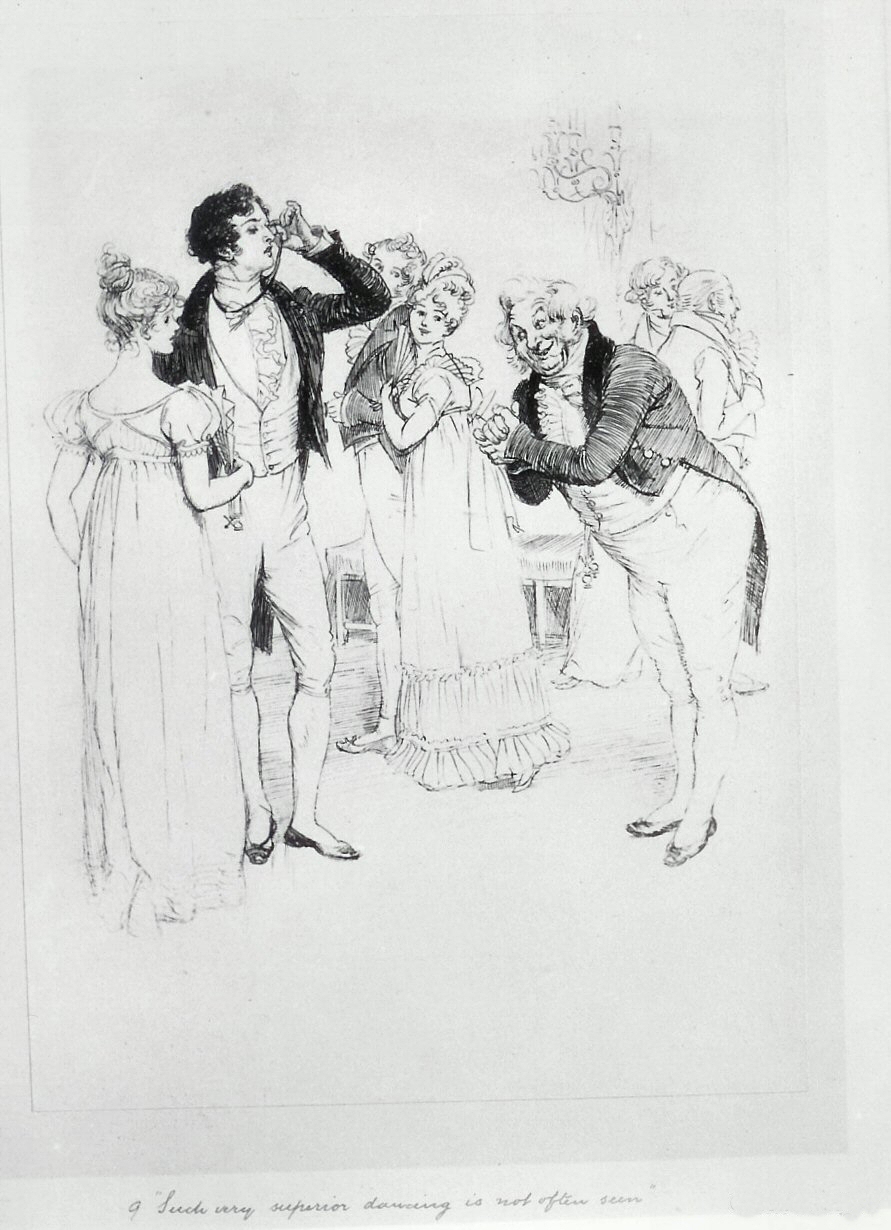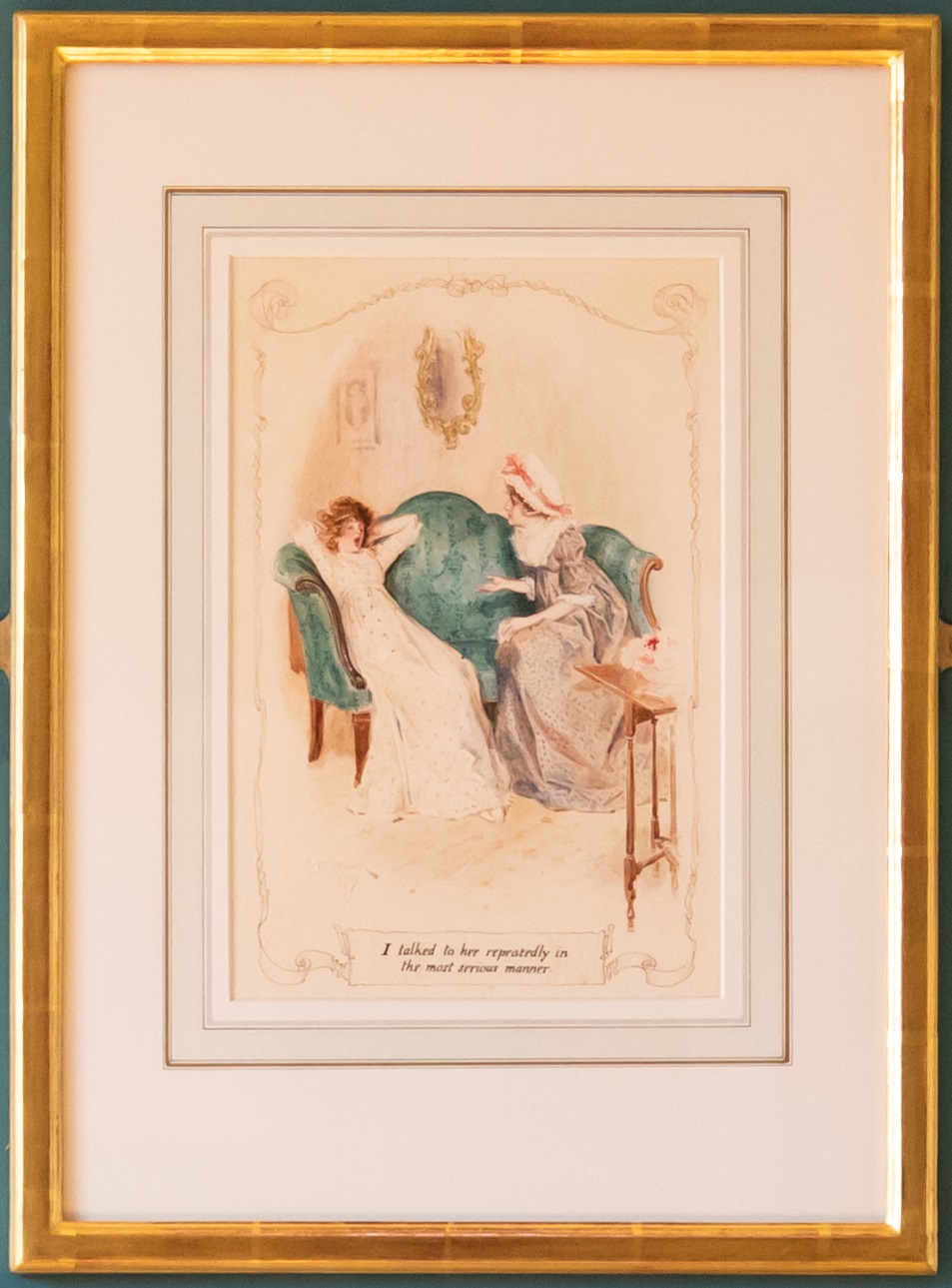A quick tangent to some lovely illustrations
7OBJECTS:
Wood engraving illustration for Pride and Prejudice, by Joan Hassell, 1957
Joan Hassall was one of the foremost wood-engravers of the twentieth century. In the post-war years, despite ill health, she was a prolific illustrator, creating wood engravings for many books including a complete set of Jane Austen’s novels for the Folio Society between 1957 and 1962.
Unlike Jane Austen’s most famous illustrators, Charles Brock and Hugh Thomson, Hassall’s illustrations are stark and forceful. Her style was defined by her medium – a carved wooden printing block – but she managed to imbue it with extraordinary detail and vigour.
In an address to the Jane Austen Society in 1973, Joan Hassall described her process illustrating the novels, describing them as ‘so much loved and known almost by heart.’
When considering clothes and interiors, she carefully researched the time period, choosing to set her illustrations in ‘the time when the first version was written’, rather than when it was published.
Hassall was widely recognised for her work; in 1972 she was elected the first lady Master of the Art Workers’ Guild, and she was awarded the OBE in 1987.
Illustration for Pride and Prejudice, printer’s proof. By Hugh Thomson, 1895
These are the original printer’s test proof plate prints for Hugh Thomson’s illustrations for the 1895 ‘Peacock edition’ of Pride and Prejudice, published by George Allen.
Thomson regularly visited the British Museum and V&A to research appropriate clothing, room decoration and furniture design for his illustrations. Despite this, however, his drawings for Pride and Prejudice have a distinct Victorian rather than Georgian feel to them. For many years, these illustrations were hugely influential on the way that Austen’s characters were seen, and many other illustrations emerged in Hugh Thomson’s style, which was known as ‘Cranfordizing’ after Thomson’s earlier illustrations for Gaskell’s novella.
Original illustration for Pride and Prejudice, by Charles E Brock, 1907
Charles Brock was famous for his illustrations of Jane Austen’s works, which included several editions of Pride and Prejudice. He also illustrated works by William Thackeray, Jonathan Swift and Charles Dickens.
This illustration was produced for an edition of Pride and Prejudice published by J. M. Dent & Co., in 1907, featuring 24 full-page coloured plates.
The scene is from chapter 52 of Pride and Prejudice, in which Mrs Gardiner writes to Elizabeth with an account of Lydia’s marriage:
‘I talked to her repeatedly in the most serious manner, representing to her all the wickedness of what she had done, and all the unhappiness she had brought on her family. If she heard me, it was by good luck, for I am sure she did not listen.’




